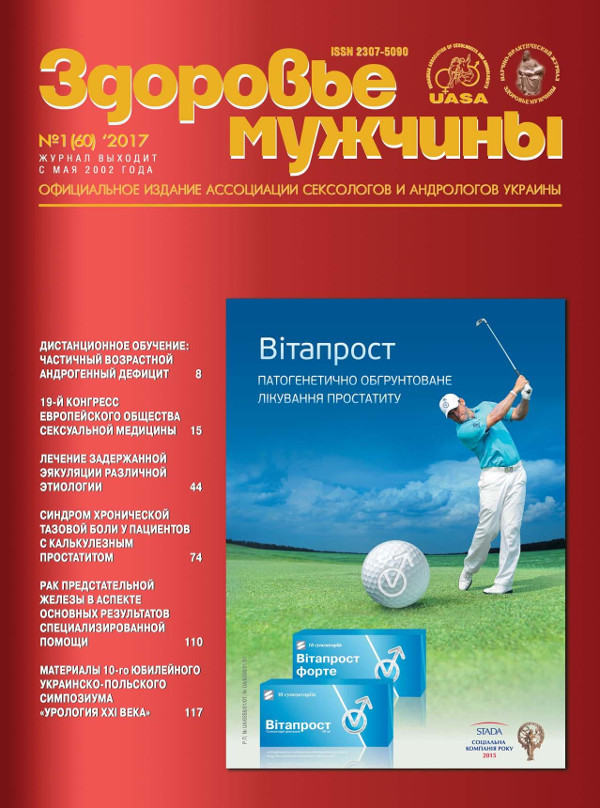The choice of treatment tactics dysuric symptoms in patients with overactive bladder
##plugins.themes.bootstrap3.article.main##
Abstract
The objective: the aim of the study was to determine the differentiated approach to medicine therapy in the patients with overactive bladder (OAB), depending on the clinical features of the disease progress.
Patients and methods. The study involved 87 women with lower urinary tract symptoms, the appropriate criteria for the diagnosis of OAB. It has been found that the pathogenic effect of the antidepressant Mirtazapine therapy in combination with an anticonvulsant Gabapentin in the treatment of OAB is to optimize the reservoir and evacuation function of the bladder.
Results. Combination therapy according to the m-anticholinergic Tolterodine and Mirtazapine helps to restore control of urination and an increase in the absolute and relative volume of the bladder, significantly improves urination, without giving rise to obstructive voiding.
Conclusion. The study showed the effectiveness of combination of Gabapentin and Phenibut during the treatment of OAB with algic syndrome that marked the end of 6 weeks of cystalgia intensity decrease by 62%.
##plugins.themes.bootstrap3.article.details##

This work is licensed under a Creative Commons Attribution 4.0 International License.
Authors retain the copyright and grant the journal the first publication of original scientific articles under the Creative Commons Attribution 4.0 International License, which allows others to distribute work with acknowledgment of authorship and first publication in this journal.
References
Diagnosis and treatment of overactive bladder (non-neurogenic) in adults: AUA/SUFU Guideline / E.A. Gormley, D.J. Lightner, K.L. Burgio [et al.] // 2012 May. American Urological Association.
EAU guidelines on urinary incontinence / J.A. Thьroff, P. Abrams, K.E. Andersson [et al.] // Eur. Urol. – 2011 Mar; 59(3):387–400.
DuBeau CE. Treatment of urinary incontinence. In: UpToDate. Basow DS (Ed), UpToDate, Waltham, MA, 2012.
Дехтяр Ю.М., Костєв Ф.І., Маломуж О.І., Паталащук А.П. Форми порушення сечовипускання у жінок при урогенітальних розладах у постменопаузі // Одеський медичний журнал. – 2004. – No 3 (83). – С. 50–53.
Борисов В.В. Гиперактивный мочевой пузырь: эффективное лечение. Consilium medicum, 2014, том 16, No 7. – С. 1– 6.
Benefits and harms of pharmacologic treatment for urinary incontinence in women: A systematic review. / T. Shamliyan, J.F. Wyman, R. Ramakrishnan [et al.] // Ann Intern Med. 2012 Jun 19; 156 (12): 861–874.
Данилов А.Б., Давыдов О.С. Диагностические шкалы для оценки невропатической боли. – 2007. – Ж. Боль, No 3 (16). – С. 11–15.
Atlas of urodynamics / J. Blaivas, M. Chancellor // Baltimore: William & Wilkins, 2007.





